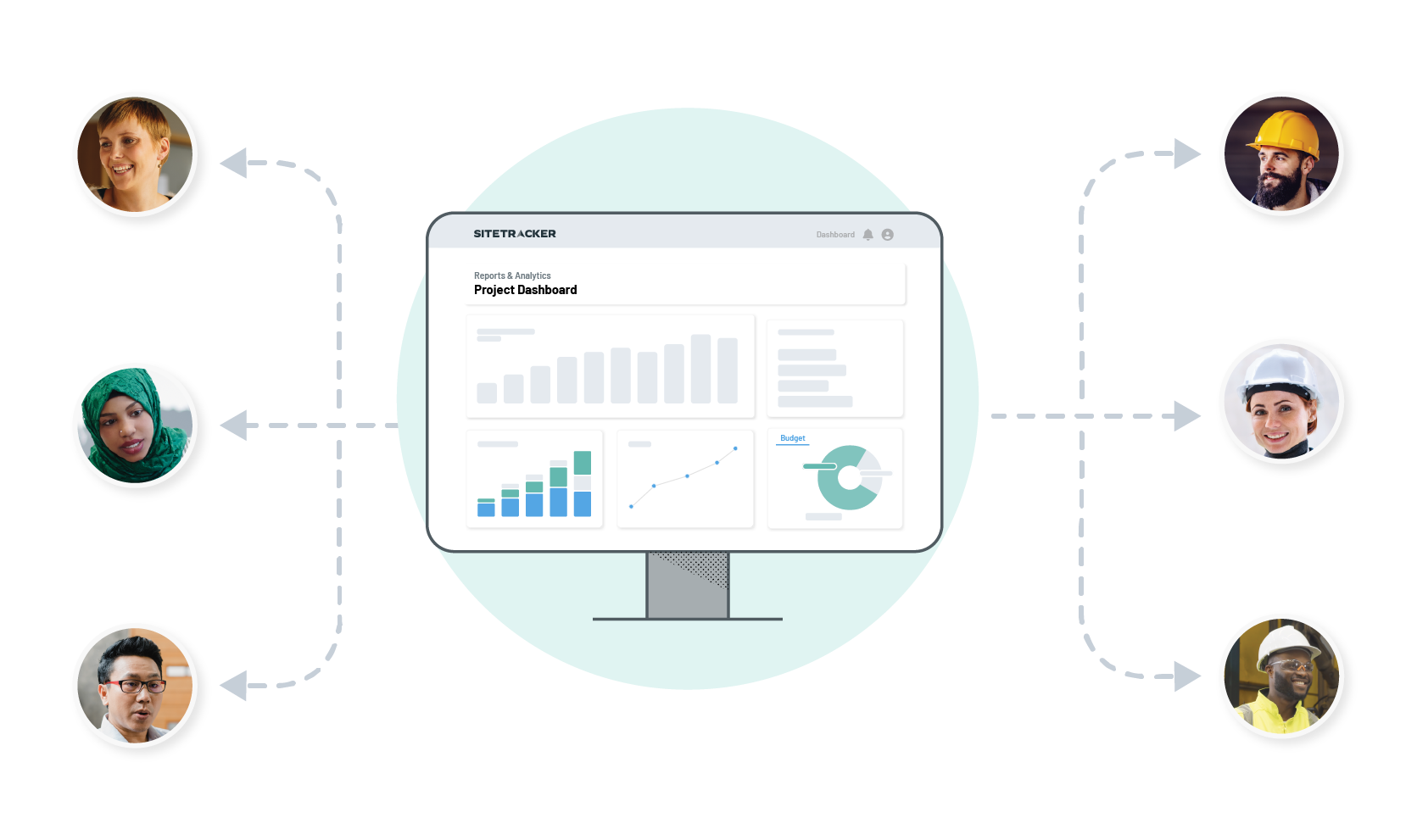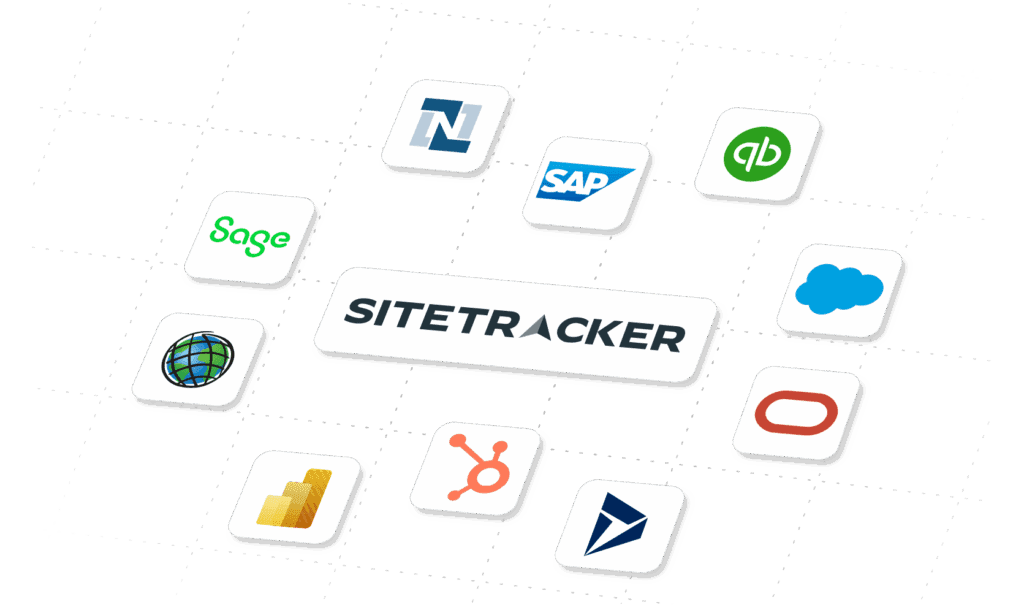Industry leaders use Sitetracker
Overview
Streamline Your Systems. Unlock Your Scale.
No single software does it all. Most businesses rely on a constellation of tools—CRM, ERP, HCM, GIS, and more to run day-to-day operations. But when data is siloed and workflows are fragmented, deployment slows down and decision-making suffers.
That’s where Sitetracker comes in.
Built to complement the systems your organization already uses, Sitetracker helps high-performing teams unite data across their critical systems. Whether you’re tracking financials in NetSuite, coordinating with vendors in QuickBooks, or planning network routes in ArcGIS, Sitetracker brings it all together in one place. Fewer delays. Less redundancy. Complete visibility across the complete project and asset lifecycle.
Benefits
Real-Time Visibility
Sync data between your core systems. Eliminate the guesswork with real-time updates on budgets, milestones, and fieldwork—right where you need them.
Rapid Time to Value
Launch faster with pre-built integration packages or a flexible API-first approach. Save time, reduce complexity, and accelerate your path to ROI.
Built for Change
Business needs evolve. Sitetracker’s open architecture—powered by Salesforce and leading middleware—makes it easy to adapt and scale your integrations as you grow.
Connect Critical Systems across the Complete Asset Lifecycle
Integrations should enhance your operations, not complicate them. Sitetracker connects your project workflows to the systems you already rely on—so your teams stay in sync, your data stays accurate, and your projects stay on track.
- Automate financial workflows—like invoicing, purchase orders, and payment tracking—and ensure finance and field teams are aligned.
- Convert opportunities into projects with zero delay. Share delivery updates back to the CRM to keep your sales team informed.
- Integrate geospatial data directly into Sitetracker. Map out deployment areas, track progress visually, and keep your planning tools up to date.
- Streamline operations by connecting resource management, HR, ticketing, and other critical systems into your deployment workflows.


Flexible, Tailored Approach
Every organization is unique, and so is every integration strategy. Sitetracker offers multiple models to match your internal capabilities, business needs, and deployment timelines.
- Use our Salesforce-native APIs to build custom integrations that meet your unique requirements—no limitations, just flexibility.
- Collaborate with our in-house experts to scope, build, and maintain reliable, scalable, and secure integrations.
- Accelerate value with pre-configured solutions for high-demand systems like NetSuite, GIS platforms, and QuickBooks. Get up and running in weeks—not months.
- For lighter data needs, leverage file transfers, scheduled exports, and batch uploads. Start simple and scale when you’re ready.
A Platform Built for Integration
Sitetracker is designed for interoperability. Built natively on Salesforce and compatible with the tools your business already uses, our platform gives you the power to connect data, systems, and workflows—securely and at scale.
- Sitetracker objects are API-ready and work seamlessly with standard Salesforce connectors and tools.
- Open, scalable APIs give you the flexibility to support everything from high-volume syncs to lightweight automations.
- Work with your middleware—Easily integrate industry-leading platforms like Mulesoft—no rip-and-replace required.

Why Are the Right Integrations So Important?
When your systems don’t talk to each other, teams lose time, duplicate work, and miss critical insights. Integration isn’t just about syncing data—it’s about streamlining decisions and unlocking scale.
With Sitetracker integrations, you can:
- Eliminate siloed workflows and manual handoffs
- Centralize data access without replacing tools
- Reduce errors and rework across departments
- Empower collaboration between finance, operations, and field teams
- Make smarter, faster business decisions with real-time visibility
Integrations are more than a technical requirement—they’re a strategic advantage.

Frequently Asked Questions
Yes. We support 55+ live integrations across platforms like Oracle, Salesforce, NetSuite, ArcGIS, QuickBooks, and more.
Yes. Sitetracker supports a wide range of Salesforce-standard APIs. You can build apps, automations, and integrations using REST, SOAP, Bulk, and other APIs—with full support for custom and standard objects.
Definitely. You’re welcome to build your own integrations using our open APIs and your preferred middleware.
Pricing depends on your integration needs, level of customization, and implementation scope. We’ll work with you to define the right path based on your goals and existing tech stack.
Yes. Sitetracker supports middleware platforms like MuleSoft and many others. You can choose your own preferred integration software and leverage your existing toolset.
Yes. Sitetracker supports both one-way and two-way syncs depending on the data model and use case.
Yes. Sitetracker provides pre-built, configurable packages for select common CRM, ERP and GIS platforms to accelerate implementation.
You can work with Sitetracker, a certified partner, or your own internal team. Our team provides full support during integration, including design, implementation, testing, and post-go-live Hypercare.
Sitetracker offers best-in-class security and encrypts data in transit and at rest. Additionally, Sitetracker complies with common security standards including SOC 1 Type II, SOC 2 Type II, ISO 27001, and ISO 27701. You can review Sitetracker’s security and privacy documentation here. Salesforce, a key part of Sitetracker’s technical architecture, adheres to dozens of different certifications and standards. View the complete list here.
Yes. Sitetracker integrates with enterprise architectures including MDM platforms, data lakes, and data warehouses via API or middleware.
